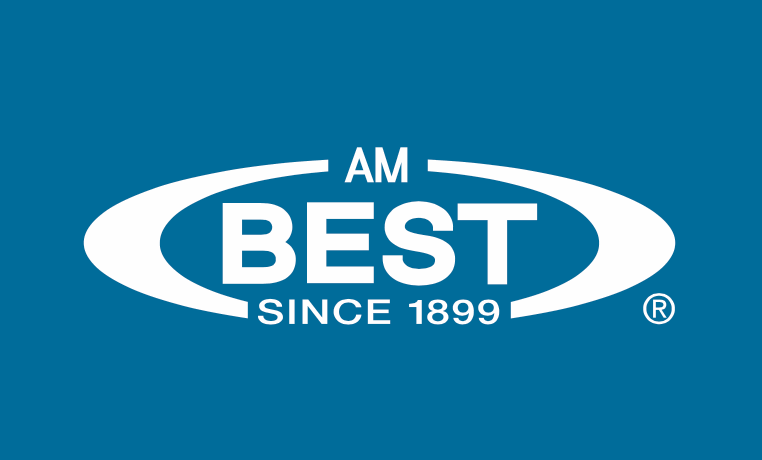Credit rating agency AM Best reports that Europe’s captive insurance sector continues to demonstrate stability and resilience, even as global economic and geopolitical uncertainties persist.
 The development of new regulatory frameworks across several European countries is reshaping the regional landscape by encouraging both the creation of new captives and the redomiciling of existing ones.
The development of new regulatory frameworks across several European countries is reshaping the regional landscape by encouraging both the creation of new captives and the redomiciling of existing ones.
Despite fluctuating market conditions, AM Best notes that captives have remained a cost-effective and reliable means of managing corporate risk. All European captives rated by AM Best retained stable financial strength ratings and outlooks through the latest assessment period.
According to AM Best, Guernsey and Luxembourg were tied as the leading European domiciles in 2024, each hosting 197 captives, based on Captive Review’s World Domicile Update 2025. Guernsey registered ten new entities but saw seventeen surrenders, while Luxembourg added seven new captives and recorded five closures, resulting in a slight net gain.
The Isle of Man and Ireland followed with 94 and 61 captives respectively, both experiencing modest declines. AM Best highlights that although the mature domiciles collectively recorded a net decrease, smaller and emerging domiciles achieved incremental growth.
France recorded the strongest net increase among European domiciles, with five new formations and no closures in 2024. AM Best attributes this growth to regulatory measures introduced in late 2022 that encouraged domestic corporations to establish their own risk vehicles. New entrants included AssuraPoste Re, CDA Reinsurance, Orange Réassurance, Soreval France, and SRIGLB.
Additional licenses for Bel Ré and Agrial Réassurance were approved by early 2025, and AM Best expects further growth through 2026. Other domiciles such as Switzerland, Sweden, and Malta also reported modest expansions, while Italy, which recently attracted several corporate relocations, remained steady with no new formations.
AM Best also highlights significant developments in the United Kingdom, which is preparing to introduce a dedicated regulatory framework for captive insurance. In July 2025, Chancellor Rachel Reeves announced plans for a “bespoke captive insurance framework” by mid-2027.
The initiative forms part of a wider effort to strengthen the UK’s financial services sector and reduce the migration of UK-linked captives to offshore domiciles.
AM Best reports that the new regime will introduce proportionate capital requirements, simplified reporting, lower fees, and faster authorisation procedures. It will also consider the use of Protected Cell Companies to support smaller firms and broaden accessibility.
While the framework will not include tax incentives, the regulatory improvements are expected to create a modern and competitive environment. The Prudential Regulation Authority and the Financial Conduct Authority have been tasked with developing detailed rules, with consultation scheduled for 2026.
In its market commentary, AM Best observes that 2025 has seen a softening of insurance rates following two consecutive years of hardening conditions. Increased underwriting capacity and capital availability have reintroduced competition, particularly in commercial property insurance, where insureds are securing broader coverage and lower deductibles.
AM Best notes that captives have responded by reassessing retention levels and refining their reinsurance arrangements. While some have limited their exposure to US casualty risks due to social inflation and reserving issues, they continue to expand coverage for non-US risks.
According to AM Best, captives have proven to be an adaptable and efficient mechanism for addressing complex exposures such as cyber incidents, property losses, and business interruption. Many captives are extending their portfolios to include directors’ and officers’ liability, trade credit, political risk, and group life insurance. Their historically low claims volatility enables them to negotiate favourable reinsurance terms, and AM Best expects improved conditions for captives during upcoming renewal cycles.
AM Best further reports that amendments to the European Union’s Solvency II regime are nearing completion. The updated rules, due to take effect on January 1, 2027, will introduce greater proportionality for small and non-complex undertakings. Captives meeting specific criteria—insuring only parent-group risks, maintaining limited exposure to individual policyholders, and excluding compulsory third-party liability—may qualify for simplified regulatory treatment.
While AM Best acknowledges that some industry participants believe further relief is warranted, the amendments represent a significant advancement in easing administrative requirements for captive insurers while preserving policyholder protection.
All AM Best–rated European captives maintained stable ratings and outlooks in the most recent review cycle, reflecting sound balance sheets and prudent capital management.
Key rating actions included the assignment of an A (FSR) and “a” (ICR) to Eni Insurance SpA following its merger with Eni Insurance DAC; an A– (FSR) and “a–” (ICR) to Gaviota Re S.A., the captive of Repsol; and a B++ (FSR) and “bbb+” (ICR) to Berkeley Re DAC, the captive reinsurer of Mondelez International.
AM Best notes that captives remain well-capitalised, with an average Best’s Capital Adequacy Ratio score of 61.7 percent, indicating a strong capacity to assume additional risks when necessary.
The company’s rating approach incorporates an evaluation of the ultimate parent company’s financial strength and willingness to support the captive. All rated European captives are single-parent entities, and most demonstrate neutral or positive linkage to their parent’s credit profile.
AM Best concludes that Europe’s captive insurance sector remains resilient, financially strong, and well-positioned for continued growth. Even as global risk conditions evolve and regulatory frameworks shift, European captives continue to provide their parent groups with effective and flexible risk management solutions, underscoring their enduring value within the broader insurance landscape.
The post European captive insurers show strength and resilience amid global market shifts appeared first on ReinsuranceNe.ws.
